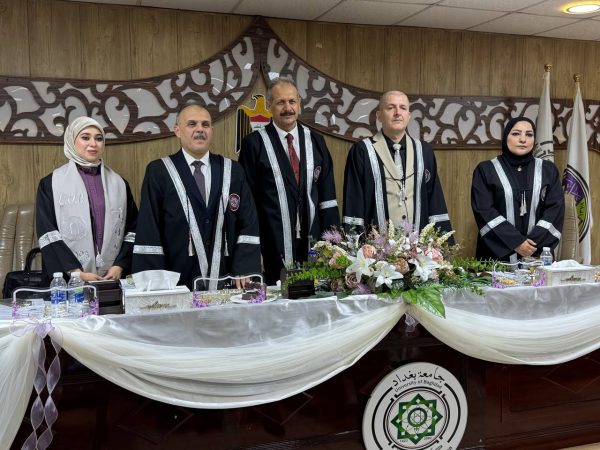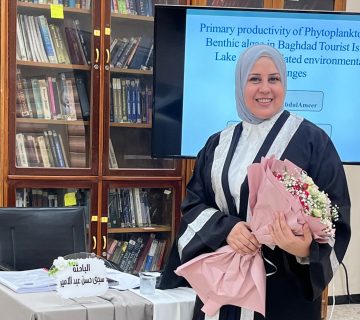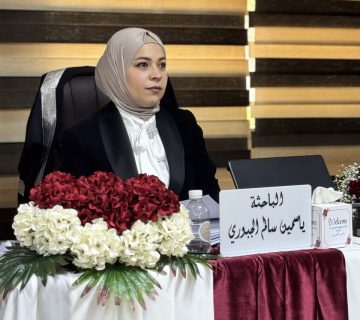Master’s Discussion
The College of Science for Women / University of Baghdad examined the thesis entitled (Ecological Study of Antibiotic- Resistance Profile of Fecal Coliforms Isolated from Some Sites of Tigris River within Baghdad City, Iraq) of the student (Esraa Abd Hussein), in Partial Fulfilment of the Requirements for the Degree of Master in Biology / Ecology
The thesis aims to study some environmental variables (physical and chemical) of the Tigris River water, analyze the antibiogram profile for isolated fecal coliform bacteria , calculate the multiple-antibiotic resistance index (MAR Index) , and detection of antibiotic resistance genes (qnrB, qnrS, parE, armA) in fecal coliform bacteria isolates using PCR technique.
The study includes collecting water samples seasonally (wet and dry) from four sites on the Tigris River within the internal borders of Baghdad city: Al-Muthana Bridge, Al-Sarafiya Bridge, Al-Senak Bridge, and Al-Jadriya Bridge. Coliforms bacteria were isolated using membrane filtration technniqe , and fecal coliform bacteria were identified using biochemical analysis and the VITEKE 2 system. antibiotic sensitivity testing was conducted for bacteria according to the Kirby-Bauer disk diffusion method against 15 selective antibiotics, and to detect three quinolone resistance genes (parE, qnrB, qnrS), and the aminoglycoside resistance gene (armA).
The study concluded that the physical and chemical analysis of the samples from the Tigris River sites showed that the total level of (TDS, pH, EC, BOD5 and DO) in the Tigris River water was within the permissible limits, except for the turbidity, which was recorded higher than the WHO standards (<5 NTU). The current results also revealed the values of the multiple antibiotic resistance index (MAR), which showed an increase in the four sites of the Tigris River, ranging between 33% and 93%, indicating the presence of a high dose of the antibiotic used. The resistance results also revealed that most of the E. coli and K. pneumoniae isolates were resistant to one or more antimicrobial agents, at a rate of (61.487%) and (65.928%), respectively. These isolates showed resistance to quinolone and aminoglycoside genes (qnrB, qnrS, parE, armA) in the bacterial isolates,which may be explained by the presence of resistance genes in fecal coliform bacteria.










